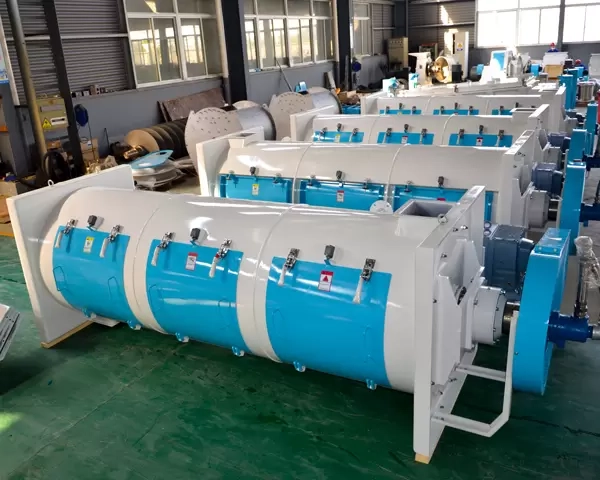In modern animal husbandry, the quality of feed directly affects the growth efficiency and health of animals. As an important equipment in feed production, feed pellet mill plays a key role in the production process. Among them, the density and hardness of the particles are the two core parameters that determine feed quality. This article will take an in-depth look at how to precisely control pellet density and hardness through a feed pellet mill, and the impact these parameters have on feed performance.
Feed pellet mill produces solid particles with a certain shape and size by compressing and shaping powdered or granular raw materials. This process involves multiple links such as raw material pretreatment, mixing, tempering, pressing, cooling and packaging.

Particle density refers to the mass of feed particles per unit volume. High density particles provide better energy concentration and lower dust ratio. The key to controlling particle density lies in the following aspects:
2.1 Selection and processing of raw materials: Different raw materials have different bulk densities. Selecting appropriate raw materials and performing appropriate crushing and mixing are the basis.
2.2 Tempering process: Moderate heating and moistening of the raw materials before pressing can increase the plasticity and promote the tight integration inside the particles.
2.3 Suppression strength: The suppression strength of the feed pellet mill is directly related to the density of the particles. By adjusting the pressure of the press wheel, the density of the particles can be effectively controlled.
2.4 Mold design and selection: Appropriate mold design helps to improve the fluidity and filling properties of the material, which in turn affects the density of the final particles.
Particle hardness refers to the ability of particles to resist deformation and fragmentation. An ideal hardness ensures that the feed remains stable during storage and transportation while making it easier for animals to chew. The main factors affecting hardness include:
3.1 Raw material characteristics: The fiber and protein content in the raw materials will affect the cohesion and hardness of the particles.
3.2 Moisture content: Appropriate moisture content is conducive to improving the hardness of the particles. Too much or too little moisture can make the pellets weak and brittle.
3.3 Pressing temperature: Temperature will affect the plasticity of the raw materials, which in turn affects the molding effect and hardness of the particles.
3.4 Post-processing process: Temperature control and tempering during the cooling process can improve the internal structure and hardness of the particles.
In order to achieve precise control of particle density and hardness, multiple factors need to be considered comprehensively and corresponding operating strategies adopted:
4.1 Standardize the raw material procurement and inspection process to ensure the stability of raw material quality.
4.2 Optimize the mixing and conditioning process, and adjust the temperature and humidity according to the characteristics of different raw materials.
4.3 Precisely control the pressing intensity and determine the best pressing parameters through experiments.
4.4 Choose a suitable mold and perform regular inspection and maintenance to maintain optimal working condition.
4.5 Implement strict post-processing procedures, including reasonable cooling time and tempering.
5. Regularly conduct sampling inspections of finished products to ensure that density and hardness meet standards.
Precise control of the density and hardness of feed pellets is critical to ensuring feed quality and animal health. Through scientific raw material management, fine process control and strict quality testing, feed pellet mill can produce high-quality feed pellets. With the advancement of automation and intelligent technology, future feed pellet mills will be able to achieve more precise density and hardness control to meet the growing market demand.
In short, the role of feed pellet mill in modern animal husbandry cannot be underestimated, and the control of pellet density and hardness is the key to ensuring feed quality. Through continuous innovation and technological improvement, we can expect more efficient, greener, and smarter feed pellet mills to contribute to the sustainable development of animal husbandry.